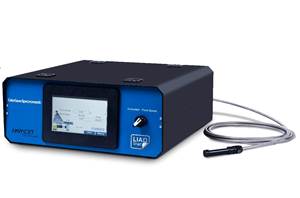‘Predictive Maintenance’ Is Key to Optimum Machine Utilization
I wrote here recently that this month’s K 2016 show in Dusseldorf (where I and the whole staff of Plastics Technology are headed next week) is evidence that the wave of “Industry 4.0” activity is building toward a crest.
I wrote here recently that this month’s K 2016 show in Dusseldorf (where I and the whole staff of Plastics Technology are headed next week) is evidence that the wave of “Industry 4.0” activity is building toward a crest.
Now, I’m also expecting to find signs of another wave just starting to build. That wave has its own buzzword: “Predictive Maintenance.” But don’t dismiss it as a fad. It’s very likely to be your future.
Predictive maintenance as an essential strategy for obtaining maximum machine efficiency and uptime. The idea is to install sensors on processing machines that will measure vibrations, torques, temperatures, pressures, electrical functions, and other things like oil quality (particle count), level, and moisture content.
One machine builder compared it to Formula 1 racing, where the vehicle data are analyzed on every circuit of the track in order to keep the car operating at optimum performance and to call it in for maintenance before a breakdown is imminent. The ultimate goal is to detect wear, leaks, or deterioration of components before a critical failure occurs. Sensor signals, processed by appropriate software, can be used to send emails to maintenance departments to order a spare part or schedule preventive maintenance.
The key is for maintenance shutdowns to be planned events, not a potentially costly surprise that has to be dealt with on an emergency basis. Predictive-maintenance data can also be monitored remotely by the machine builder, which has the expertise to interpret the information. This added level of machine intelligence and communication functions makes predictive maintenance and element of the Smart Factory, or Industry 4.0.
One maker of injection machines notes that the need for predictive maintenance technology comes from two factors:
Many manufacturers have fewer experienced maintenance technicians on-site these days;
It’s getting harder and harder for those technicians to keep up with all the new machinery and controls technology entering the market. (Just read our K Show previews in September to get an idea.)
But as one machine builder wisely puts it, predictive maintenance is the intersection of technology and human diagnostic competence. You have to “know what to listen for, how to interpret it, and when to put this knowledge to use.”
My first awareness of predictive maintenance came more than a decade ago, when Coperion Corp., Sewell, N.J. (then Werner & Pfleiderer), promoted the idea of putting vibration sensors on compounding equipment to sense the health of drive bearings. More recently, the pioneer has been Prophecy Sensorlytics of Columbia, Md., which has licensed Novatec Inc., Baltimore, to use its preventive-maintenance sensor technology on materials-handling auxiliaries. (Read about it here.)
At K next week, there will be at least three firms that I know of talking about predictive maintenance:
•Engel Austria (U.S. office in York, Pa.) will present its new e-connect.monitor software and sensors for monitoring screw wear and ballscrews on electric servo axes of injection machines. (See our K preview.) Engel considers it part of its “inject 4.0” program.
•Last week, at its open house in Torrington, Conn., I learned that Wittmann Battenfeld will introduce its Condition Monitoring System for comprehensive monitoring of injection machines (photo). It’s a new addition to the “Wittmann 4.0” program (details here).
•Italy’s , an established producer of twin-screw extruders, will present its I-Smart concept of sensors and advanced diagnostics on a co-rotating compounding machine (details here).
I’m sure these are just the first ripples of a new wave of technology you can’t afford to ignore.

Related Content
For This Molder, Less Paper + More Data = Higher Productivity
At Tessy Plastics, going paperless means more than idle printers and fewer orders for three-ring binders.
Read MoreEigen Integrates Ampacet Color Monitoring into Machine Vision Solutions for Plastics
Injection molders, blow molders and extruders looking to avoid downtime and reduce scrap related to defect detection and color monitoring get a single solution for inline quality monitoring and management.
Read MoreDigital Manufacturing: Two Medical Molders Embrace Industry 4.0
‘Digitalization’ and ‘connectivity’ are loaded terms—shorthand for a whole new way of doing 911▒Č┴¤═°. It can’t be accomplished in one go. But two Midwest molders in the sensitive medical field are already feeling the benefits of their initial steps in that direction.
Read MoreProcess Monitoring or Production Monitoring — Why Not Both?
Molders looking to both monitor an injection molding process effectively and manage production can definitely do both with tools available today, but the question is how best to tackle these twin challenges.
Read MoreRead Next
Beyond Prototypes: 8 Ways the Plastics Industry Is Using 3D Printing
Plastics processors are finding applications for 3D printing around the plant and across the supply chain. Here are 8 examples to look for at NPE2024.
Read MoreLead the Conversation, Change the Conversation
Coverage of single-use plastics can be both misleading and demoralizing. Here are 10 tips for changing the perception of the plastics industry at your company and in your community.
Read MorePeople 4.0 – How to Get Buy-In from Your Staff for Industry 4.0 Systems
Implementing a production monitoring system as the foundation of a ‘smart factory’ is about integrating people with new technology as much as it is about integrating machines and computers. Here are tips from a company that has gone through the process.
Read More















